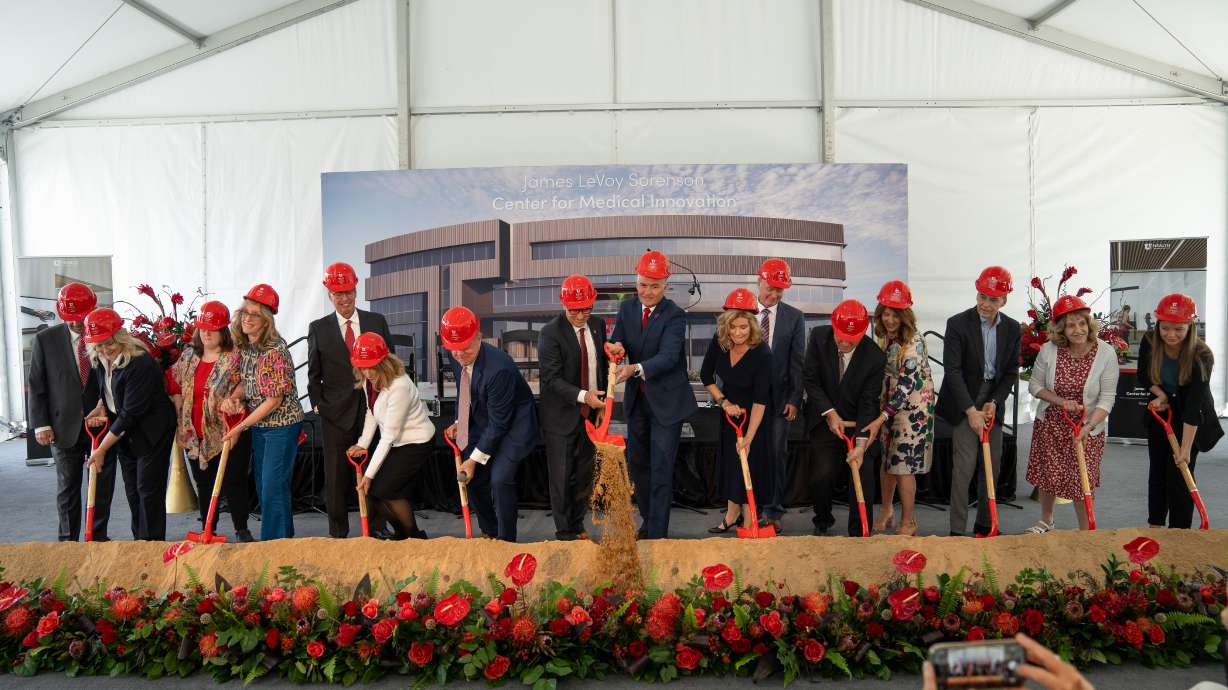
SALT LAKE CITY — University of Utah Health officials broke ground Friday morning on a new building for medical innovation and research.
The James LeVoy Sorenson Center for Medical Innovation will be a “beacon of transformative research and medical device innovation,” the university said in a prepared statement. The center will aid in the school’s “unwavering commitment to advancing medical science and improving patient care.”
The $50 million “state-of-the-art facility” will be located on campus at 27 S. Mario Capecchi Drive and is anticipated to open in spring 2026. The university said the construction is made possible by a $22 million gift from the Sorenson Legacy Foundation.
“The Sorenson Legacy Foundation is so pleased that this wonderful building, the James LeVoy Sorenson Center for Medical Innovation, will carry on my father’s incredible spirit of medical device innovation, as well as his compassionate spirit toward those who suffer,” said Ann Sorenson Crocker, family representative of the Sorenson Legacy Foundation.
The building is named after James LeVoy Sorenson, who was a prolific inventor, entrepreneur and philanthropist who “revolutionized the standard of care” through more than 50 patents in his name. Some of his inventions include the disposable surgical face cover, the single-use intravenous catheter and hemodynamic arterial monitoring devices.
“The James LeVoy Sorenson Center for Medical Innovation exemplifies our commitment to entrepreneurialism and accelerating the transfer of the U.’s research into practical use,” University of Utah President Taylor Randall said. “The center will promote collaboration and drive transformative advancements in medical care and device development. The facility will be a national leader and have influence that reaches well beyond campus, shaping the future of health care for generations to come.”
The 60,000-square-foot space will host four levels with advanced prototyping and clean room assembly labs dedicated to creating and refining medical innovations. The center will emphasize “cross-campus interdisciplinary cooperation” to help fuel transformative innovation and discovery, the university said.
“My father’s passion for innovation and commitment to improving health care have left an indelible mark on the world,” said Jim Sorenson, chairman of the Sorenson Impact Foundation. “This center not only honors his memory but also carries forward his legacy of innovation and impact, ensuring that his pioneering spirit lives on in the work of future generations.”
The facility will have a clinical bio-tissue surgery discovery suite where physicians can evaluate medical technologies and procedures in a hands-on, real-world environment. There will also be “incubator spaces” designed to nurture student startups that can drive technology licensing opportunities for the university and economic growth for the state.
“This center represents more than just a building; it’s a gateway to endless possibilities for future students,” said Mark Paul, executive director of the Center for Medical Innovation.
“By providing access to cutting-edge research facilities, mentorship opportunities and a vibrant community of innovators, this center will empower students to pursue their passion for medical innovation and make a tangible difference in the world. It’s not just about shaping the future of health care; it’s about shaping the lives of the students who will lead it,” Paul said.
